Pressure Algometry Evaluation of Two Occlusal Splint Designs in Bruxism Management-Randomized, Controlled Clinical Trial
- PMID: 34071832
- PMCID: PMC8198302
- DOI: 10.3390/jcm10112342
Pressure Algometry Evaluation of Two Occlusal Splint Designs in Bruxism Management-Randomized, Controlled Clinical Trial
Abstract
The aim of this pilot study was to evaluate the short-term effectiveness of two different occlusal devices and their impact on the pressure pain threshold (PPT) values among patients who reported to the Dental Prosthetics Outpatient Clinic of Pomeranian Medical University (Szczecin, Poland) and who were diagnosed with probable bruxism. Two groups were formed (A and B) to which patients were assigned randomly. Each group used a different occlusal splint for bruxism management. The occlusal appliance by Okeson, or the bimaxillary splint, was used overnight by each patient for 30 days of the study. The PPT was measured twice, at the first visit and after 30 days of using each occlusal device, with Wagner Paintest FPX 25 algometer. Bruxism was diagnosed based on data from the patient's medical history and from the physical examination. Nocturnal Bruxism Criteria according to the International Classification of Sleep Disorders (Third Edition) was used for the patient's evaluation. Results: similar pain factor (PF) reduction was observed in both the examined groups, regardless of the device used; canine guidance and no guidance were similarly effective in terms of increasing pain resilience.
Keywords: TMD; algometer; bruxism; canine guidance; clenching; grinding; masseter; masticatory muscle; occlusal appliance; pressure pain threshold; sleep disorder; splint; temporalis.
Conflict of interest statement
The authors declare no conflict of interest.
Figures
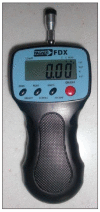
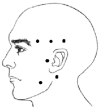
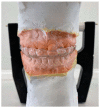

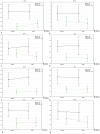

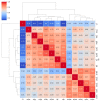

Similar articles
-
Effects of massage therapy and occlusal splint therapy on electromyographic activity and the intensity of signs and symptoms in individuals with temporomandibular disorder and sleep bruxism: a randomized clinical trial.Chiropr Man Therap. 2014 Dec 15;22(1):43. doi: 10.1186/s12998-014-0043-6. eCollection 2014. Chiropr Man Therap. 2014. PMID: 25512839 Free PMC article.
-
Short-term effects of NTI-tss and Michigan splint on nocturnal jaw muscle activity: A pilot study.Clin Exp Dent Res. 2021 Jun;7(3):323-330. doi: 10.1002/cre2.371. Epub 2020 Dec 25. Clin Exp Dent Res. 2021. PMID: 33369223 Free PMC article. Clinical Trial.
-
Electromyographic analysis of masseter and anterior temporalis muscle in sleep bruxers after occlusal splint wearing.J Bodyw Mov Ther. 2012 Apr;16(2):199-203. doi: 10.1016/j.jbmt.2011.04.001. Epub 2011 May 24. J Bodyw Mov Ther. 2012. PMID: 22464117 Clinical Trial.
-
Nocturnal bruxism and temporomandibular disorders.Adv Neurol. 1988;49:329-41. Adv Neurol. 1988. PMID: 3278546 Review.
-
Sleep bruxism: an overview for clinicians.Br Dent J. 2018 Sep 28;225(6):497-501. doi: 10.1038/sj.bdj.2018.757. Epub 2018 Sep 21. Br Dent J. 2018. PMID: 30237554 Review.
Cited by
-
The Importance of Type D Personality in the Development of Temporomandibular Disorders (TMDs) and Depression in Students during the COVID-19 Pandemic.Brain Sci. 2021 Dec 27;12(1):28. doi: 10.3390/brainsci12010028. Brain Sci. 2021. PMID: 35053772 Free PMC article.
-
Neuromuscular and occlusion analysis to evaluate the efficacy of three splints on patients with bruxism.BMC Oral Health. 2023 May 25;23(1):325. doi: 10.1186/s12903-023-03044-5. BMC Oral Health. 2023. PMID: 37231466 Free PMC article.
-
Effects of Occlusal Splints on Spinal Posture in Patients with Temporomandibular Disorders: A Systematic Review.Healthcare (Basel). 2022 Apr 15;10(4):739. doi: 10.3390/healthcare10040739. Healthcare (Basel). 2022. PMID: 35455916 Free PMC article. Review.
-
Stress Concentration of Hybrid Occlusal Splint-Mouthguard during a Simulated Maxillofacial Traumatic Impact: 3D-FEA.Dent J (Basel). 2022 Apr 6;10(4):65. doi: 10.3390/dj10040065. Dent J (Basel). 2022. PMID: 35448059 Free PMC article.
-
Evaluation of the efficacy of manual soft tissue therapy and therapeutic exercises in patients with pain and limited mobility TMJ: a randomized control trial (RCT).Head Face Med. 2023 Sep 8;19(1):42. doi: 10.1186/s13005-023-00385-y. Head Face Med. 2023. PMID: 37684652 Free PMC article. Clinical Trial.
References
-
- Bernhardt O., Gesch D., Splieth C., Schwahn C., Mack F., Kocher T., Meyer G., John U., Kordass B. Risk factors for high occlusal wear scores in a population-based sample: Results of the Study of Health in Pomerania (SHIP) Int. J. Prosthodont. 2004;17:333–339. - PubMed
LinkOut - more resources
Full Text Sources
Medical

